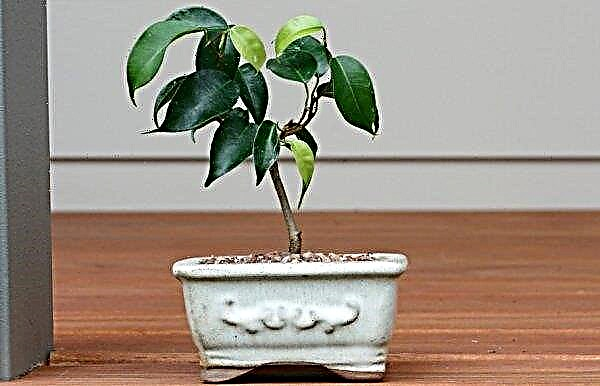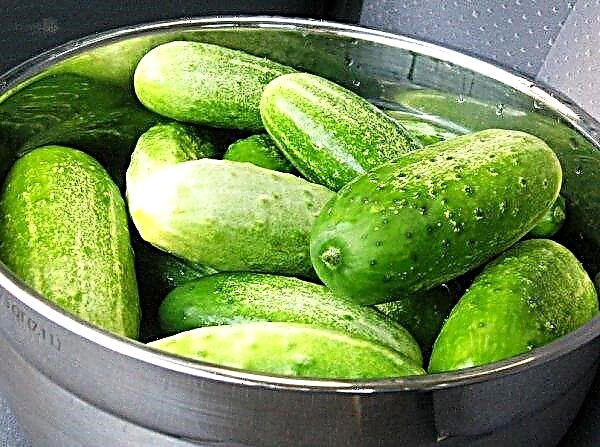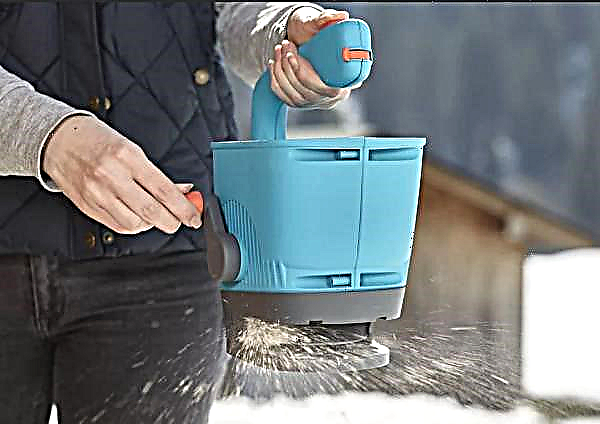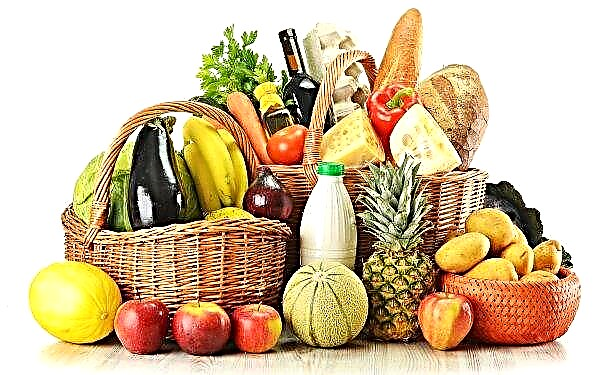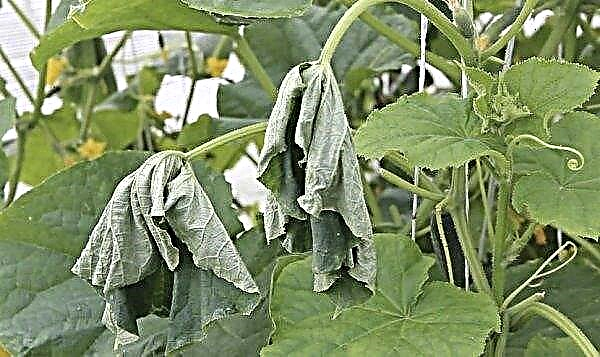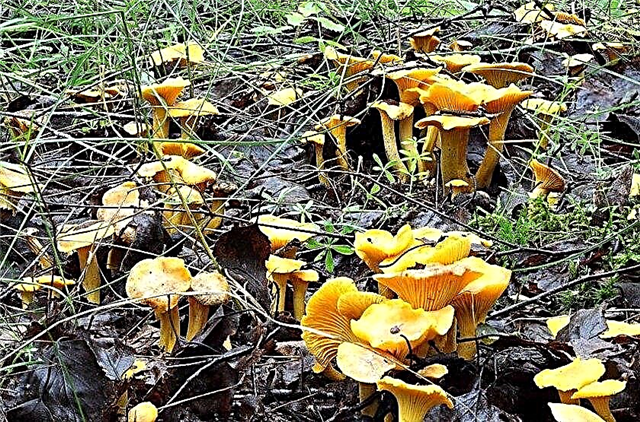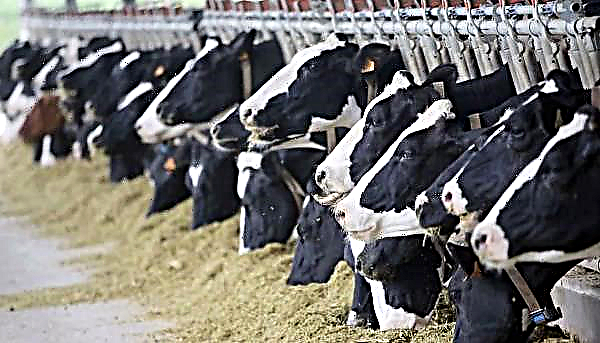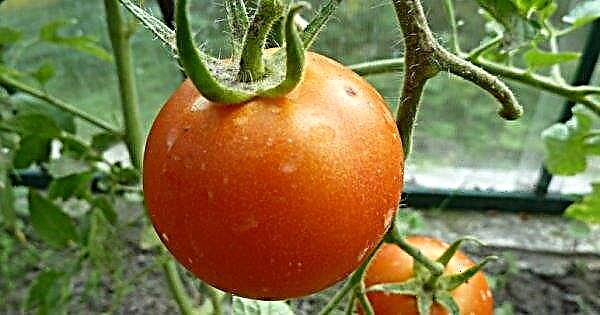Garlic grows in almost every garden. Not a single salting or preservation can do without this culture; it is an ingredient in many dishes. Today's article is devoted to the topic of plant propagation by bulbs.
What are bulbs
There is spring garlic planted in the spring and bearing fruit in the year of planting, and there is winter garlic - it is planted in the fall and harvest is expected next year. The difference between the winter view is that the cloves are located around the base of the arrow. Air bulbs called bulbs are formed on this stem.
Air bulbs are an excellent breeding material. In addition, they have several more useful properties:
- retain varietal qualities of the culture;
- provide disease resistance to the future plant;
- allow you to save on the purchase of planting material.

Garlic over time, after about 3-5 years, begins to degenerate, that is, its heads become smaller. With the help of bulbs, you can rejuvenate the culture without depriving it of varietal characteristics. And if you take into account that more than 100 bulbs are formed around the arrowhead, the landing costs are simply invisible.
Did you know? Louis Pasteur, a French microbiologist in the 19th century, proved that garlic contains antibiotics that are active against many infections, bacteria, in particular, salmonella and staphylococcustoand.
Bulb selection and preparation
The size of the bulb cloves depends on the quality of the planting material. Therefore, you need to carefully select suitable instances.
Selection criteria:
- size over 3 mm in diameter;
- lack of double tops;
- lack of any damages and spots;
- dry bottom.

One and a half months before the proposed planting, the onion bulbs are moved to the refrigerator, preferably in a temperature of no more than +4 ° С. Before sowing, the material is disinfected, which is the prevention of fungal infections.
The procedure consists of the following actions:
- 50 g of wood ash is poured with water (3 l).
- The solution is insisted 30 minutes.
- Then mix thoroughly, bring to a boil. Allow to settle.
- The upper layer of the solution is removed and filtered, diluted to half with boiled water.
- In the resulting mixture, the planting material is soaked for 1-2 hours.
Important! If the planting bulbs are less than 3 mm, the resulting crop will be frail and small.
Soil preparation
The culture prefers to grow in nutritious and loose soils with neutral acidity. The site needs to be dug up on the bayonet of a shovel and break up clods. To deoxidize the soil, 300 g of lime per square meter is added to it.

Humus and mineral additives (per sq. M) are added to fertilize the soil:
- humus - 5 kg;
- superphosphate - 30 g;
- calcium chloride - 20 g.
Important! The plant should not be planted after solanaceous crops - fungal spores remain in the soil from them.
Types of propagation of garlic with bulbs
Of great importance for productivity is the variety of culture from which the planting material was taken. Varieties brought from distant regions or countries do not adapt well to local climatic conditions. Therefore, local, zoned varieties are ideal.
There are two ways to reproduce with bulbs:
- the first - seeds are planted in the spring at a great distance from each other; the sprouted sowing is left to winter on the spot;
- second - sowing, sown thickly in the spring, at the end of summer, they dig out and transplant after about a month, according to the planting pattern for the winter.

Features of planting and growing
The difference between how to plant and grow spring and autumn crops is small. Autumn plantings do not require leaving until spring, wintering under a layer of mulch and snow. For plants planted in the spring, care begins almost immediately after sowing.
Fall
The optimal time for autumn planting is September-October. You need to finish planting before mid-October, otherwise the bulbs will not have time to take root.
How to plant seeds, scheme:
- the distance between the rows is 15 cm;
- the distance between the bulbs - 10 cm;
- depth - 5 cm.
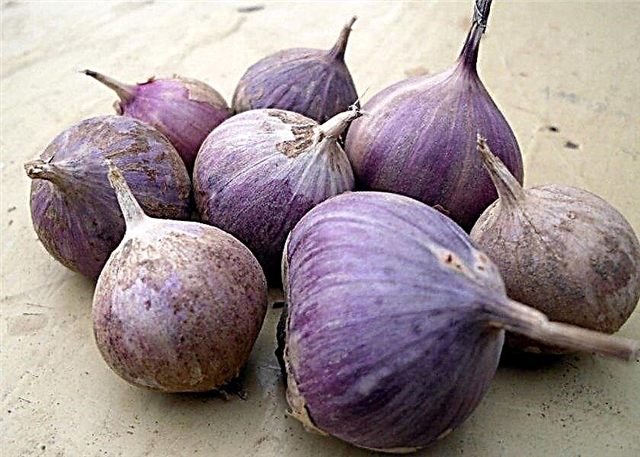
In the spring
Spring sowing is carried out from late April to early May. Fertilized land in autumn is leveled with a rake, if there are clods, they need to be broken.
Sow by the tape method, approximately 6-8 rows, the scheme is as follows:
- distance between rows - up to 40 cm;
- the distance between the sets - 15 cm;
- depth - 3 cm.
Garden Care
After the emergence of seedlings begins active care. Every 7-10 days, the crop needs watering. The frequency depends on the amount of natural rainfall. It is necessary to spill the soil before the top layer is moistened by 10 cm. After watering, weeds must be removed and the plot loosened to a depth of 4 cm. For normal growth and development, bulbs need oxygen.
Fertilize plants begin after the appearance of two strong leaves. Scheme of feeding:
- the first - mullein solution 1:10, 2 l / sq. m;
- the second (after 14 days) - ammonium nitrate and superphosphate in 5 g / 10 l of water, 2 l / sq. m;
- the third (at the end of June) - sprinkled with wood ash at the rate of 300 g per square meter. m

Harvesting and storage
The ripening of the tops is signaled by the yellowing of the tops. For harvesting, it is advisable to choose a cloudy day so that exposure to aggressive ultraviolet radiation does not reduce the shelf life of the seeds. Heads with bulbs are neatly dug and pulled out of the ground by the tips of the tops.
Did you know? In the old days in the south of Russia there was a belief: so that the bride would not be spoiled, garlic leaves were woven into her braid.
The harvested crop is cleaned of adhering soil, dried to rustling under a canopy. After drying, cut off the foliage, remove the roots and cracked husk. Store in linen bags or in boxes, wrapping paper. The storage location should be dry and dark, storage temperature - 20–25 ° С.

Useful Growing Tips
Despite the apparent ease of growing garlic from bulbs, there are some subtleties in the process.
Recommendations of experienced gardeners:
- It is best to plant a crop after cabbage, pumpkin, legumes - They nourish the soil well with organic substances.
- Before boarding it is undesirable to apply fresh manure or bird droppings to the soil - due to the abundance of nitrogen in them, the bulb will become loose, all the strength of the plant will go to the tops.
- So that weeds do not grow on the site for a long time, seed grooves are laid out with paper. The seeds are first mulched with sand and sawdust, and then sprinkled with a layer of soil. It should be borne in mind that newspapers can not be used, because they have a lot of toxic lead.
- If you do not dig a sowing in the summer for an autumn transplant, a larger fruit will grow from it.
- If the tops of the plants have already died, then you need to hurry with the cleaning, otherwise the foliage will die, and the heads will be difficult to find.
Planting with bulbs is the most reliable way to grow a large crop, preserving all the varietal qualities of the culture. Caring for seedlings is not complicated, the main thing is to carry out all the procedures in a timely manner.

